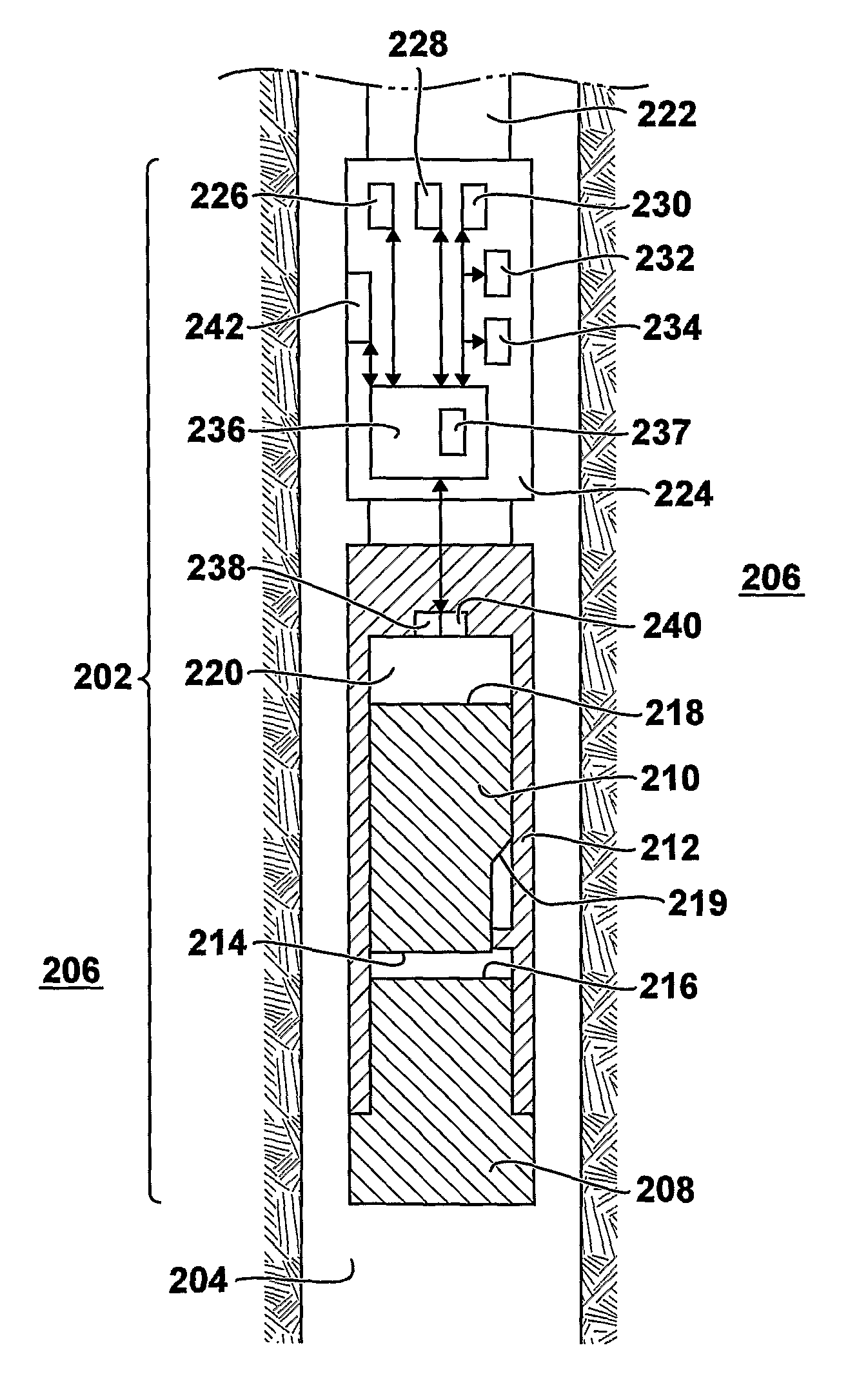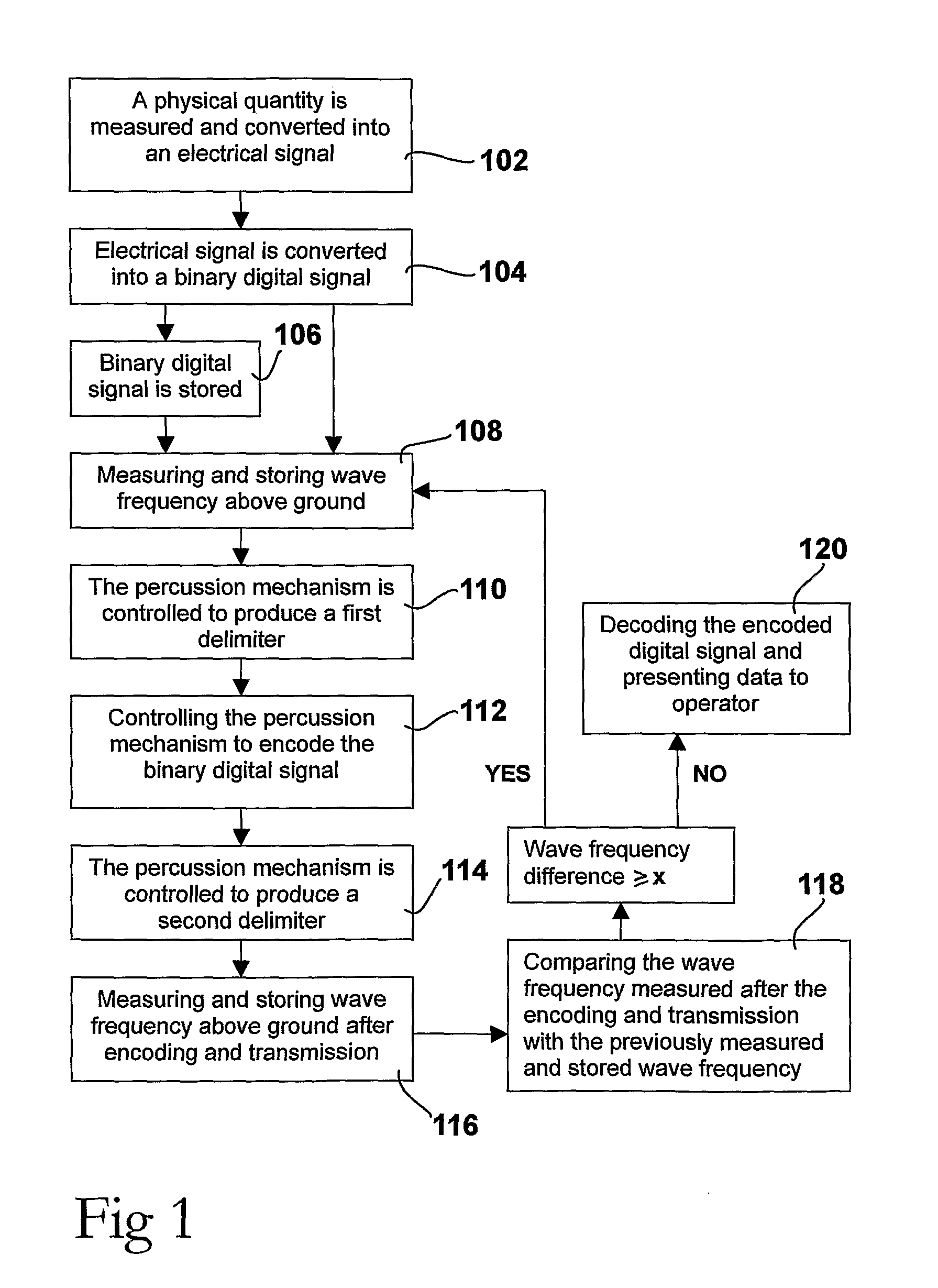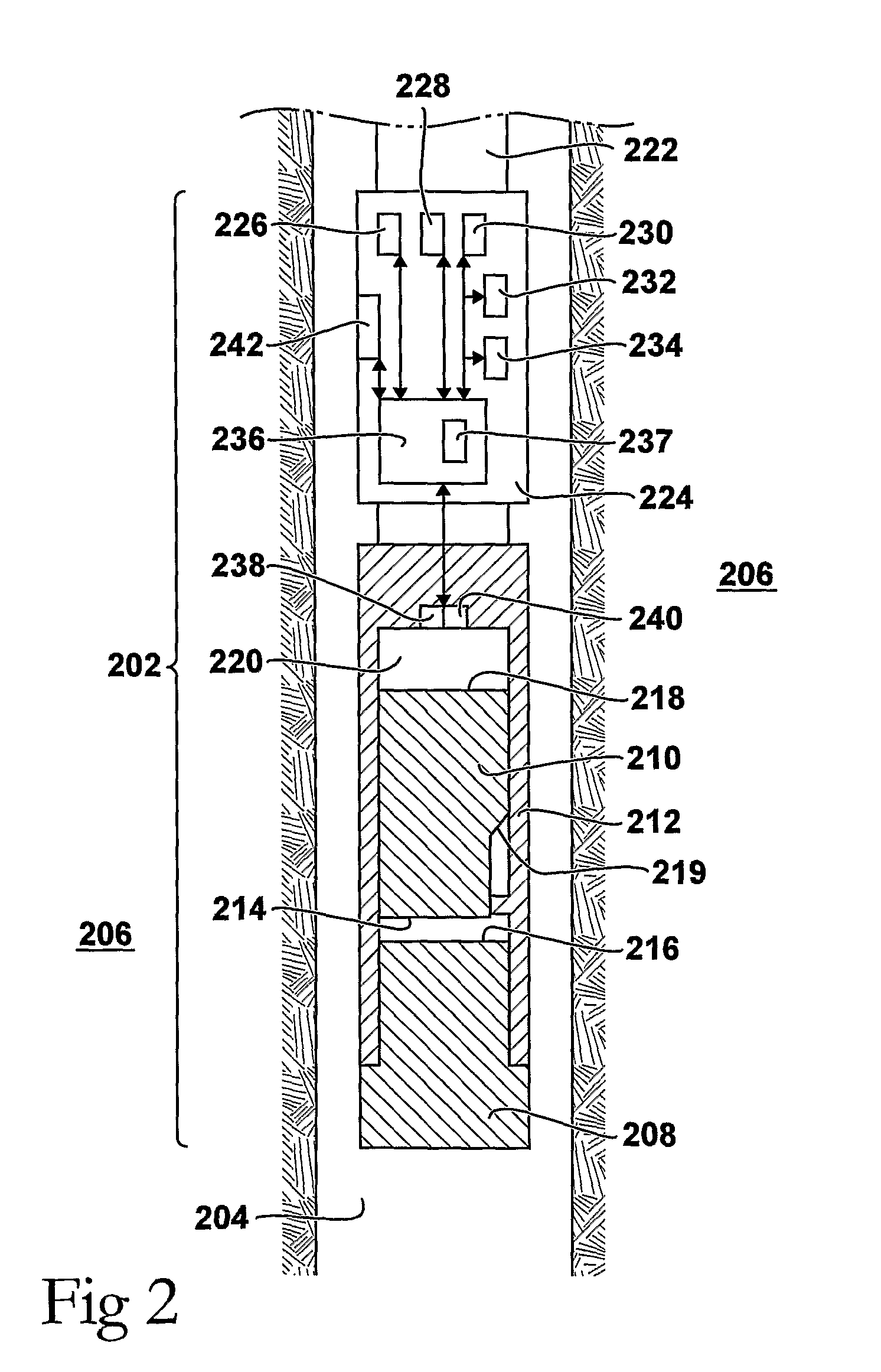Bottom-hole assembly, and a method and system for transmitting data from a bottom-hole assembly
a bottom-hole assembly and data technology, applied in the field of bottom-hole assembly, can solve the problems of short electronic pulse telemetry, large data rate limitations, and rapid loss of signal strength, and achieve the effect of efficient data transmission
- Summary
- Abstract
- Description
- Claims
- Application Information
AI Technical Summary
Benefits of technology
Problems solved by technology
Method used
Image
Examples
Embodiment Construction
[0040]FIG. 1 shows a flow chart illustrating aspects of the present invention's method for transmitting data from a bottom-hole assembly, BHA, positioned in a borehole in an earth formation, which BHA comprises at least one sensor, a percussion drill bit and a percussion mechanism including a compressed air-driven piston which strikes an impact surface of the drill bit during the drilling.
[0041]A physical quantity, e.g. torque, is measured and the physical quantity is converted into an electrical signal by means of the sensor, at step 102. The electrical signal is converted into a binary digital signal by means of a control unit including processor means, at step 104, and the binary digital signal is stored in storing means, at 106, for future transmission. However, the method can also proceed without said storing.
[0042]When it is time for transmission of the binary digital signal from the BHA, a the current working percussion frequency of the percussion mechanism, i.e. the frequenc...
PUM
 Login to View More
Login to View More Abstract
Description
Claims
Application Information
 Login to View More
Login to View More - R&D
- Intellectual Property
- Life Sciences
- Materials
- Tech Scout
- Unparalleled Data Quality
- Higher Quality Content
- 60% Fewer Hallucinations
Browse by: Latest US Patents, China's latest patents, Technical Efficacy Thesaurus, Application Domain, Technology Topic, Popular Technical Reports.
© 2025 PatSnap. All rights reserved.Legal|Privacy policy|Modern Slavery Act Transparency Statement|Sitemap|About US| Contact US: help@patsnap.com



